At Noomo Agency, we've worked extensively on brand identity for startups and tech companies in the past, helping them stand out and connect with their target audience. We have observed how everything is changing: how people interact with brands, and where these main interactions occur. A lot of brand communication has shifted online, and now it's moving to XR (Extended Reality). Brands can no longer afford to be static. Brand identity should be dynamic and easily adaptable to the physical world, the web, AR, and VR.
If you are thinking about creating a brand identity that will lead your company into the future, send us a message.
Checking out how Web3 is different from the old versions of the web.
We are about to dive into the topic of Web3 and its potential impact on branding and design. But before we do that, let’s take a quick look at the history of the web.
In the Web 1.0 era (1994 and beyond), the internet was primarily a “read-only” platform. This meant that website administrators would upload information for users to read, and if they were lucky, maybe find a picture to download to their computer. While this might seem primitive now, it was a major technological breakthrough at the time.
Fast forward to the Web 2.0 era, where the internet became a “platform” for users to upload their own content and interact with others. This was the era of the first social networks, which allowed users to communicate, share information, and make new connections. Website design also changed significantly during this time, with the addition of interactive elements, the ability to leave comments and likes, and various widgets and gadgets.
Enter Web3, or the decentralized web. This is the era of blockchain technology and decentralized networks, giving individuals more control over their data and content. With Web3, users can make their own decisions about their content, receive payment for ads they view, and have the ability to delete their own data. Web3 has the potential to completely transform how we use the internet and interact with each other online, and it will likely have a significant impact on branding and design.
So, what makes a strong brand?
It’s all about creating that emotional connection with the consumer. It’s about using design, marketing, and business practices to appeal to their values and expectations. It’s about making sure that your brand stands out and that it’s something that people will remember and want to come back to. In the context of Web3, it will be interesting to see how brands adapt and evolve as this new technology changes the way we interact with the internet and with each other online.
Exploring the various ways brands can engage with web3.
So, what are the various ways that brands can engage with Web3? One way is through the use of augmented reality (AR). The future of the internet may involve a virtual world that is enhanced by AR, as depicted in the film “Ready Player One”. Some clothing brands and retailers are already using AR for online fitting rooms, while Instagram has introduced branded masks that enhance the user experience. It’s hard to say exactly what the physical world will look like in the future, but it’s clear that AR will play a significant role in how brands engage with their customers.
The metaverse: a new frontier for brand engagement.
As we consider the endless possibilities of the Metaverse, it’s clear that thisimmersive digital world is opening up exciting new opportunities for brand development and engagement. From virtual worlds like Nikeland, where users can create avatars, interact with each other, and participate in sporting challenges, to the virtual presentation of Samsung’s flagship phone, the S22, and even a virtual McDonald’s restaurant, the Metaverse is quickly becoming a central hub for brand experiences. And with the potential for virtual cities complete with virtual billboards and streetlights on the horizon, the future is bright for brands looking to make their mark in this digital realm.
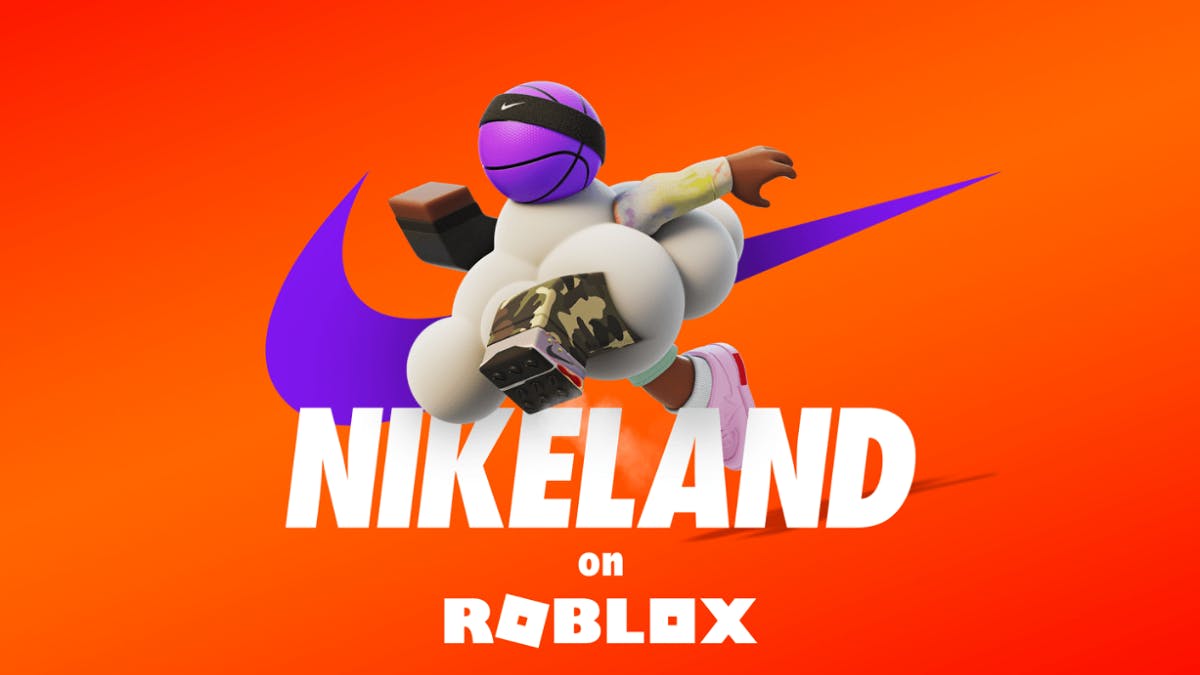 https://www.beyondgames.biz/21138/nikeland-has-nearly-7-million-consumers-already/
https://www.beyondgames.biz/21138/nikeland-has-nearly-7-million-consumers-already/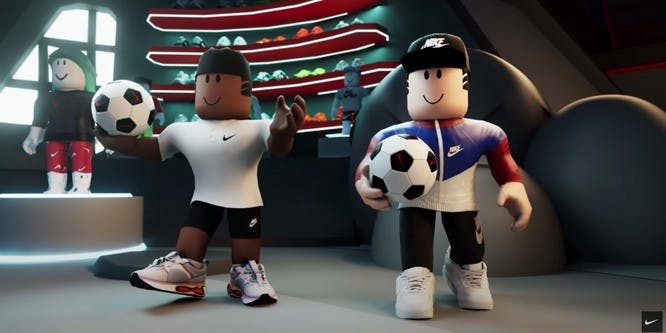 https://retailwire.com/discussion/will-fans-visit-nike-in-the-metaverse/
https://retailwire.com/discussion/will-fans-visit-nike-in-the-metaverse/NFTs in brand marketing.
As we continue to see the proliferation of non-fungible tokens (NFTs) in the digital world, it’s no surprise that a new profession has emerged: NFT design. Agencies specializing in NFT design are popping up left and right, offering their services in creating unique digital assets that can be bought and sold on the blockchain. Some big name brands have already jumped on the NFT bandwagon, with Adidas releasing a range of highly sought-after collectible items that have sold for over $20 million. Even luxury fashion giant Gucci is getting in on the action, turning footage of their fashion shows into NFT format.It will be interesting to see how NFTs continue to shape the world of brand marketing in the future.
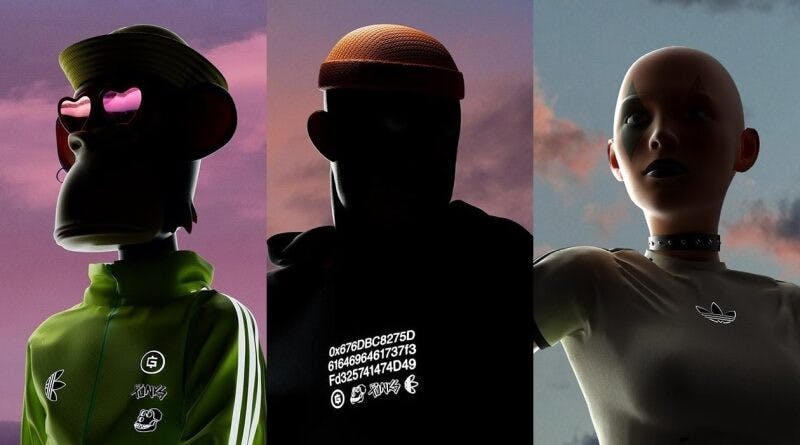 https://look-travels.com/adidas-sappuie-sur-lambition-du-metaverse-et-de-la-nft-avec-un-partenariat-a-quatre/
https://look-travels.com/adidas-sappuie-sur-lambition-du-metaverse-et-de-la-nft-avec-un-partenariat-a-quatre/Potential evolution of brand design.
So, what does the future hold for brand design? As we explore the potential evolution of brand design, it’s clear that dynamic branding and the use of technologies like AR and NFTs will play a significant role. From unique collectible items to interactive packaging and dynamic storytelling, the possibilities for brand engagement are endless. And as the Metaverse continues to grow and virtual cities become a reality, it’s likely that we’ll see even more innovative uses of these technologies in brand marketing. Of course, only time will tell how exactly these trends will play out and which brands will embrace them. But one thing is certain:
the future of brand design is an exciting and constantly evolving space, full of endless possibilities.
Dynamic branding.
Our research in the FMCG space has shown that many consumers enjoy discovering new products and experiences, anddynamic branding techniques can help brands stand out and build emotional connections with their audience. By offering interactive elements, such as the ability to control the story or add gamification, brands can effectively reach new target segments and increase brand awareness. In fact, for some consumers, a trip to the store to browse products could even become a form of entertainment.
 Designed by Agostina Benaglia for DOMINGO https://www.behance.net/gallery/154212793/Primas-Wine-Label-Design
Designed by Agostina Benaglia for DOMINGO https://www.behance.net/gallery/154212793/Primas-Wine-Label-DesignFuture of digital branding.
Well, let’s delve into the future of digital branding and how it may be impacted by Web3. As we all know, the Metaverse is a virtual world where anything is possible. And it looks like commercial advertising will become a big part of it. This means designers will have to get creative in order to stand out in this virtual world.
But it’s not just about designing for the Metaverse, it’s about designing for a whole new era of digital branding.
With Web3, we’re entering the era of decentralized networks and blockchain technology, which gives individuals more control over their data and content. This means that users can make their own decisions about their content, receive payment for ads they view, and even delete their own data if they want to.
So what does this mean for digital branding? It means that we’ll have to be more innovative in our approaches. Pop-up windows and interactive elements may become the norm, and it’s up to designers to make sure they capture the attention of users in this new, immersive world. We may also see the emergence of avatar design as a service offered by design agencies, and the merging of digital and fashion design.
And let’s not forget about NFTs and mascots. These non-fungible tokens and virtual characters offer endless opportunities for designers and advertisers to connect with consumers in new and exciting ways. Whether it’s through challenges and rewards or interactive storytelling, the Metaverse offers a vast range of possibilities for digital branding.
Multisensory branding.
Are you ready to delve into the world of multisensory branding?
It’s a realm where brands can engage with consumers through all five senses— sight, sound, smell, touch, and taste. While visual branding is the most common form, many brands also incorporate kinesthetic and gustatory elements into their product branding. Take perfume brands, for example — they often rely on the sense of smell to create a memorable experience for their customers. Music and specific voices can also be powerful tools for brands to use in commercials and other forms of advertising.
By harnessing the power of multiple senses in their marketing efforts, brands can increase their recognition and create more immersive and unforgettable experiences for consumers.
However, certain limitations can make it difficult for brands to fully utilize all five senses in their communication. The Metaverse presents an opportunity for brands to overcome these limitations and connect with users in more comprehensive and interactive ways. This can be especially beneficial for digital brands, which may have more restrictions on their ability to connect with consumers through the senses. So why not explore the potential of multisensory branding and see what it can do for your brand?
Animated characters in branding.
Get ready to meet some new friends in the Metaverse. As the use of virtual and augmented reality continues to rise, it’s likely that we’ll see an increase in the use of animated characters to represent and communicate with consumers. These characters will not only serve as mascots, but also as a way to add a new level of sensory engagement with the brand. For example, Nike may create a virtual Nikeland where users can create avatars and interact with Nike characters in sporting challenges. Or, Coca-Cola may create a virtual reality game where users collect virtual Coke cans and play mini-games with Coke-themed characters.Overall, these characters will add a new level of immersion and engagement with the brand, rather than simply being mascots in the traditional sense.
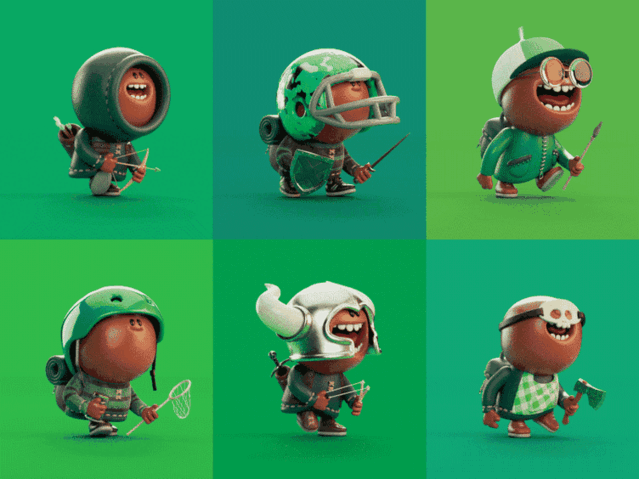 Designed by Fraser Davidson for Cub Studio
Designed by Fraser Davidson for Cub StudioDynamic identity and dynamic typography.
As the world of design continues to evolve, the concept of dynamic identity is becoming increasingly important. While static design is still prevalent, the accessibility and prevalence of new carriers for identity are making it less and less prominent.Dynamic design, on the other hand, adds life and movement, making it more effective at capturing the attention of audiences.
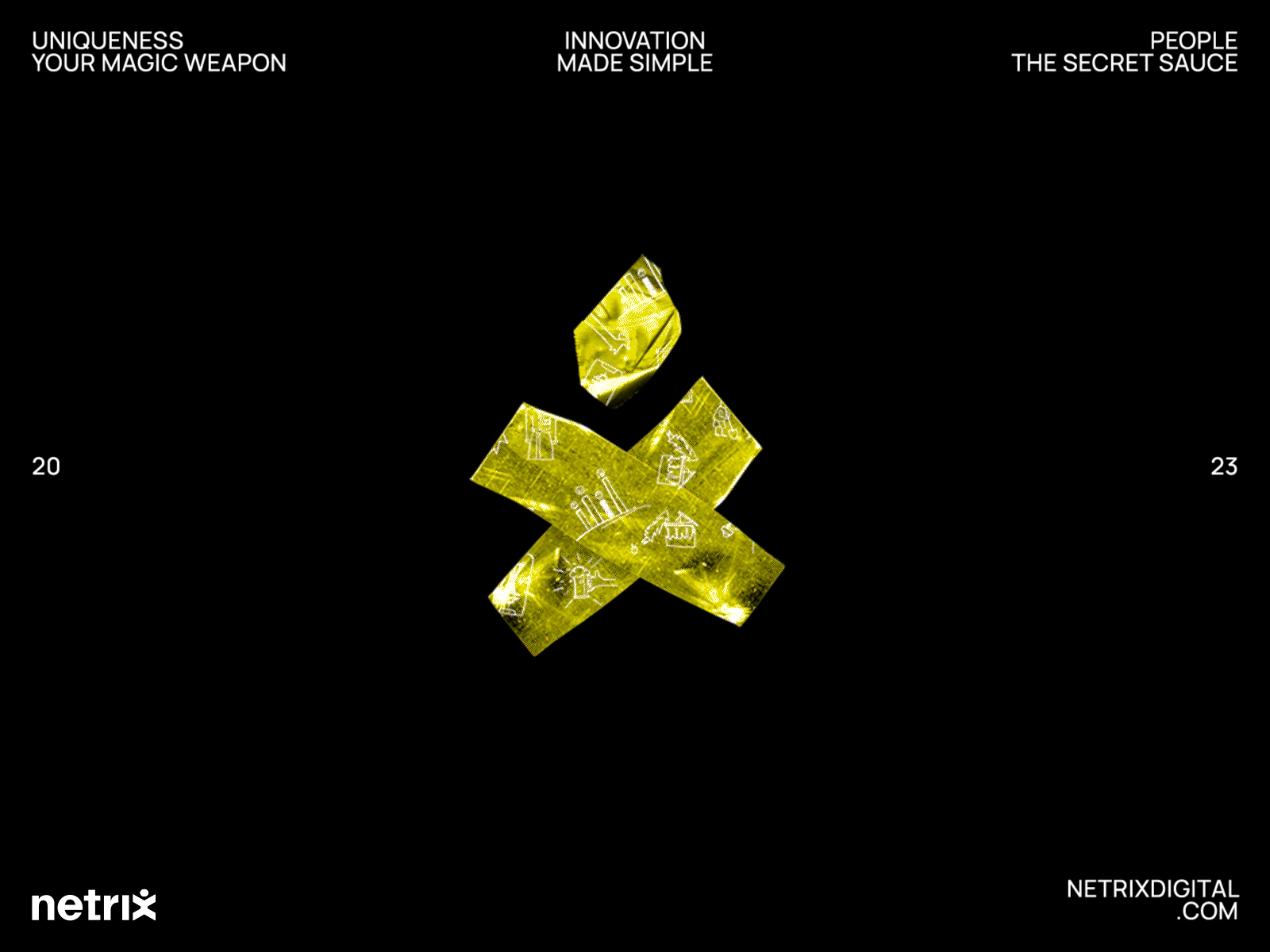 Dynamic logo. Created by Noomo - thenoomo.com
Dynamic logo. Created by Noomo - thenoomo.com Designed by Spiilka Design Büro - https://www.behance.net/gallery/54705257/Keep-Brand-Identity?tracking_source=search_projects%7Ckeep
Designed by Spiilka Design Büro - https://www.behance.net/gallery/54705257/Keep-Brand-Identity?tracking_source=search_projects%7CkeepOne aspect of modern design that is particularly important for flexibility and creativity in branding is dynamic typography. As the use of dynamic graphics becomes more widespread, brands will likely want to incorporate dynamic typography as well in order to create cohesive and engaging visual identities. This can involve designing custom typefaces that are compatible with various graphics and can easily be adapted to different contexts and platforms. By building a typographical system that is compatible with any type of graphics, brands can create dynamic and visually appealing identities that stand out in the digital world.
 Designed by Mat Voice
Designed by Mat Voice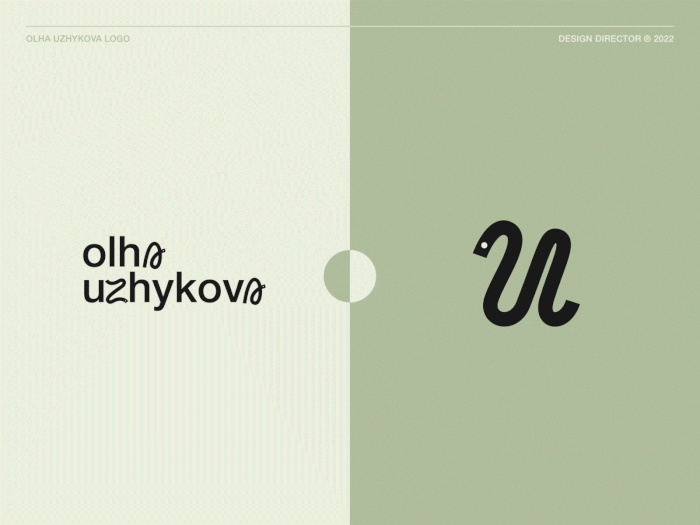 Logo design with dynamic typography
Logo design with dynamic typography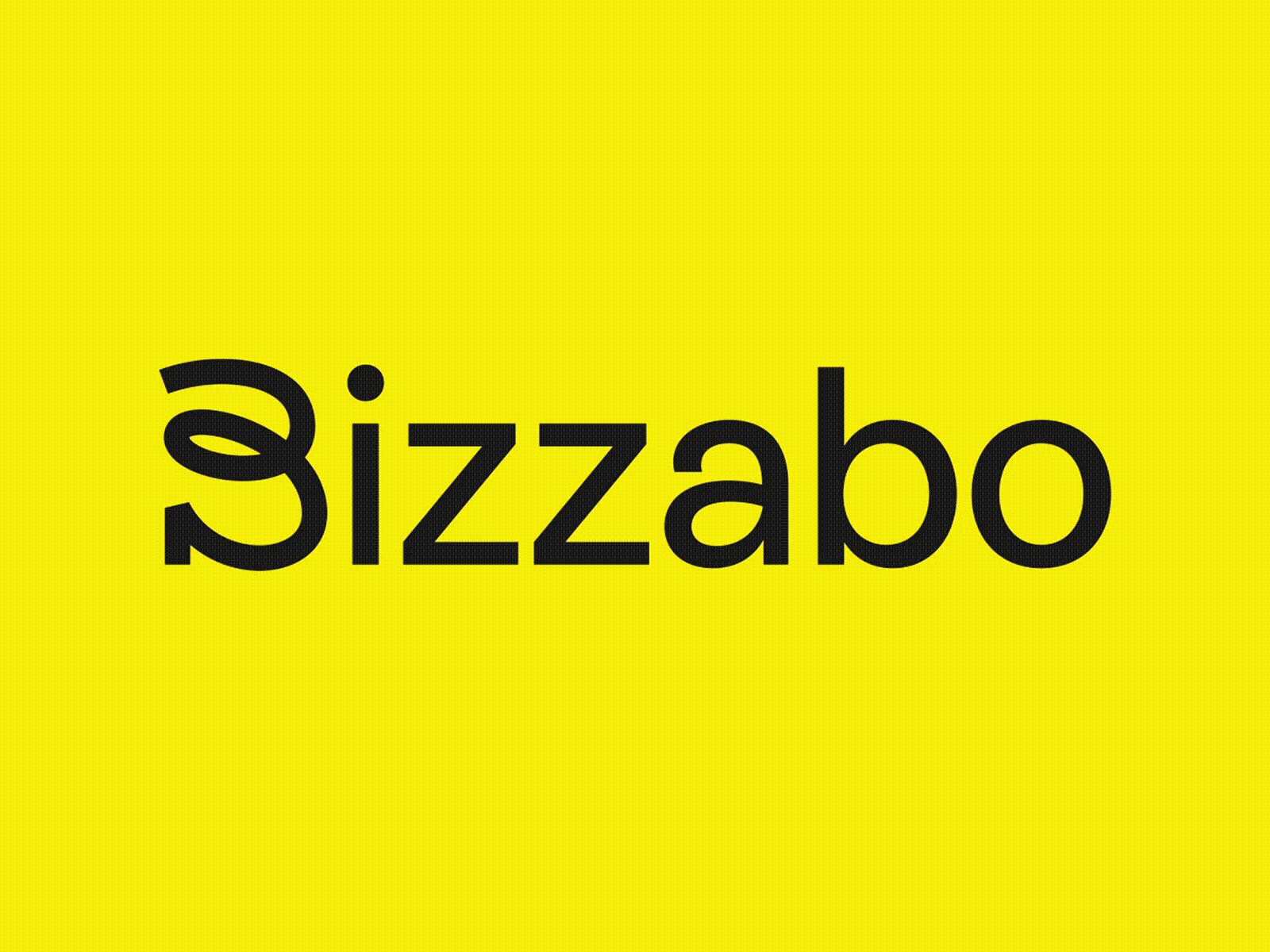 Designed by Asis
Designed by Asis3D graphics in brand identity.
3D graphics and 3D animation are also becoming increasingly popular in design, and it’s likely that this trend will continue to grow and evolve. While there may be a temporary slowdown in the popularity of 3D due to oversaturation, this is likely to be short-lived. The emergence of Web 3.0 and the growing popularity of the Metaverse will drive the demand for 3D elements in design.
It’s likely that in the future, the use of 3D versions of logos will become the norm.
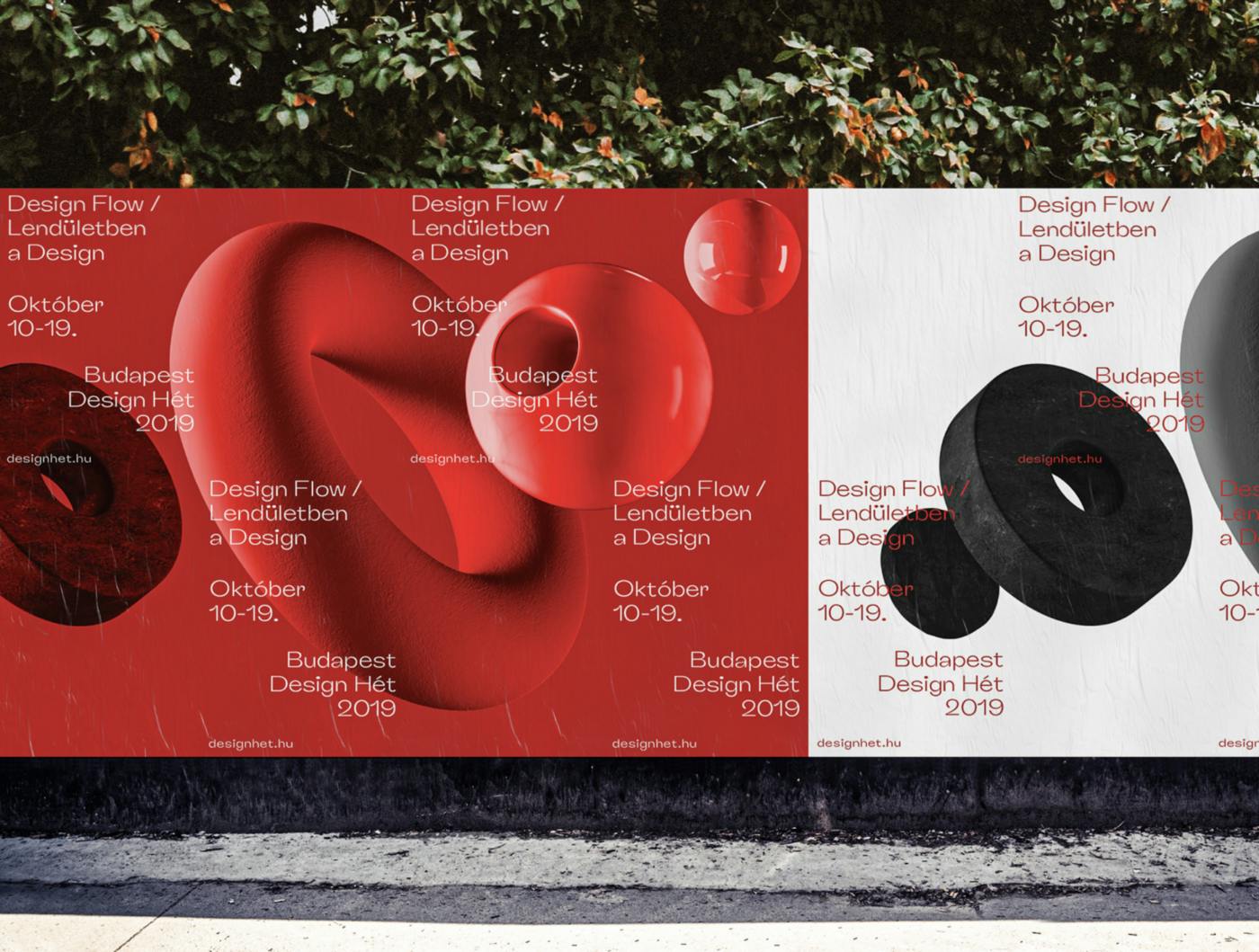 Designed by multiple designers for Classmate Studio
Designed by multiple designers for Classmate StudioVerbal branding.
Verbal branding is also getting a spotlight, with a focus on minimal design and punchy text. In addition to typographic systems that are compatible with a wide range of graphics, these systems will also require bold text that better conveys the brand’s message and inspires an emotional connection. A skilled copywriter can transform a bold message into a catchy phrase, or even a not-so-bold message into an attractive phrase.
Combination of 3D and 2D.
The combination of 3D and 2D graphics can also be a powerful tool for companies looking to make a splash in the Metaverse. This combination allows brands to showcase their brand in a visually striking and engaging way, while also conveying the message that they are adapting and evolving with the times. The craft part of brand identity, including creative illustrations, will become even more important. As the Metaverse continues to grow and mature, we can expect to see more and more companies embracing this approach to marketing and branding.
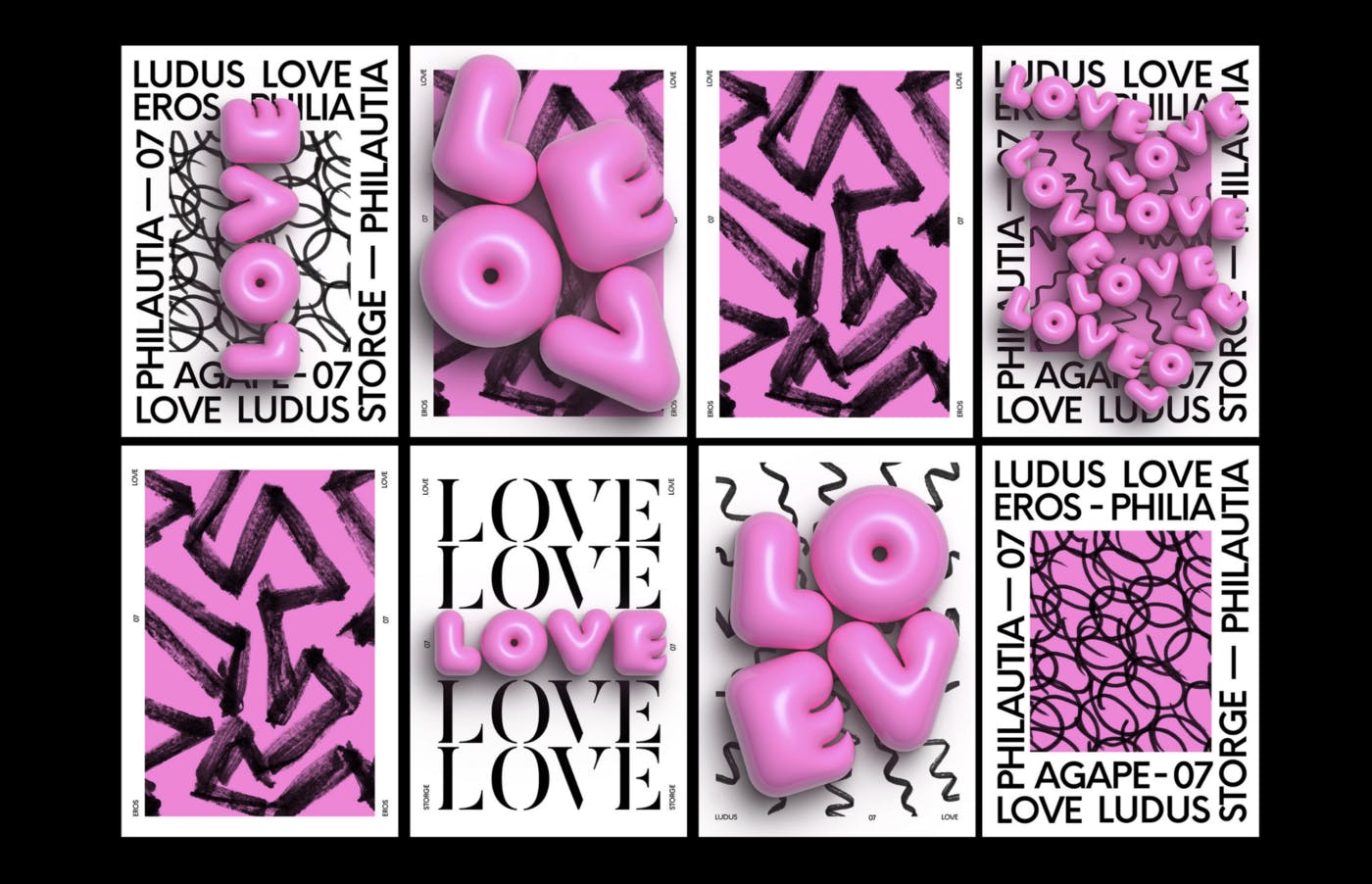
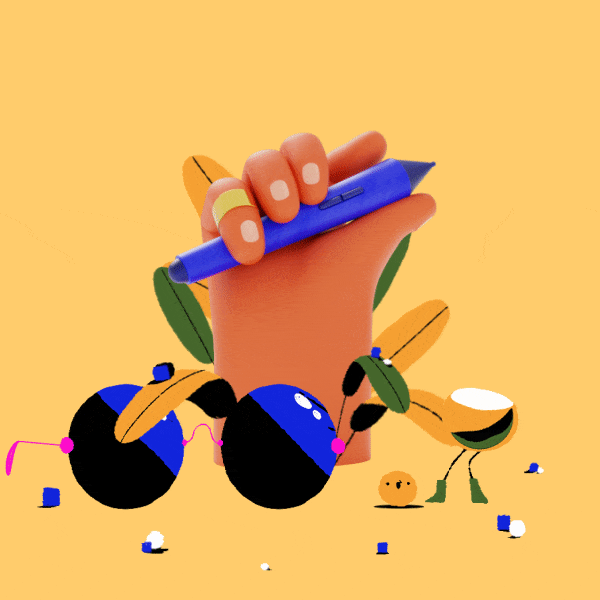 Designed by Max Kravchenko for MDS
Designed by Max Kravchenko for MDSWhat's in store with Web3? Let's find out!
So what should we expect in the future of digital branding? Well, the use of dynamic identity, dynamic typography, 3D graphics, and characters in branding will continue to grow and evolve as technology advances and the Metaverse becomes more prevalent. These elements add a new level of immersion and engagement for consumers and allow for more flexibility and creativity in branding. As the digital world becomes increasingly crowded, companies that embrace these dynamic approaches to marketing and branding will have a competitive edge and be better equipped to stand out and make a lasting impression.
That’s what we can expect, and we’re excited to see how it all plays out!
Check our recent case study: Brand identity for one of the biggest festivals in Washington, D.C. - The World Culture Festival
Check The Best Examples of Dynamic Brand Identity for Startups.
Explore - Noomo Beat - an immersive 3D AI audiovisual experience for brand activation. Or read a full Case Study.
Let's discuss the future of your brand identity - drop us a message.










